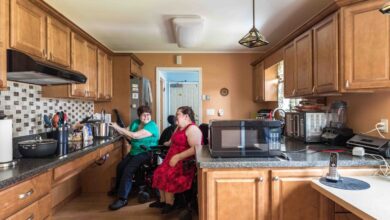Technological Tips For House Designers and Builders

You don’t have to be a professional architect to build a home. Increasingly, people across the country are motivated to create their own properties, often on land that they’ve inherited or purchased for a low amount of cash. Building a home from scratch is, of course, incredibly exciting, but there are financial incentives for it too. A home that you build yourself can often be considerably cheaper than a built home, and it can also host all of the features and special touches that you want from your home. Home designing and the building is a challenge, though, so here’s a little information on the technology that can help you keep on track on your home-building journey.
Spreadsheets
It’s not only accountants who use spreadsheets. Actually, there are hundreds of different applications for a simple spreadsheet, from making sure your budgeting is on track to looking into the cost of materials and comparing how much different materials will cost when you build your home. Spreadsheets also come in templates, which means that certain people have already set up helpful spreadsheets that are designed to help you design and build your home.
As such, a simple search of spreadsheet templates can reveal a way that you can structure your house planning. Most of all, spreadsheets are important for budgeting – but they can also be useful for keeping track of time, personnel, materials, and other essentials you’ll need to design and build your home.
Gantt Charts
Before we move on from spreadsheets, it’s worth introducing a slightly different form of digital spreadsheet: the Gantt chart, which is designed to account for time rather than cash or materials. Gantt charts are incredibly helpful if you’re doing something like designing and building a home, which is something that you’ll do in steps that often require the previous step to be complete before you start on the following step.
Gantt charts help you map out these steps so that you know what tasks you need to focus on throughout the design and building of your home. That’ll keep you on time and on budget, which is hugely important if you’re building a home with the express wish to save cash. Try out a Gantt chart today in order to see how useful, intuitive, and informative it can be to map out the stages of your house building in this way.
Designing Apps
Next, we come to the all-important designing apps. There are programs that help you to actually conceive of, experiment with, and eventually design your distinctive home. You can design a tiny house using this software, focusing on the size and utility of each and every room. Or you can even use it to design a larger, mansion-style home. This software is incredibly versatile, and while it’s best used by people who have a degree of understanding of house building, it’s also something you can do intuitively in order to show a professional designer what you might want your home to look like.
Make the design of your home as unique and distinctive as possible by engaging with these handy apps. They’re perfect for those who are interested in experimenting with form and function, and those who don’t want to build your typical home, which you can do by taking the designs of another architect. Try some of these apps online today or watch a YouTube tutorial to see how they work.
Communications
When you’re designing and building a home, you’ll naturally need a number of people to work with you. You might be trying to go it alone when it comes to the design process, but as soon as it actually comes to building the thing, you’re going to need people to help you out. That means being in touch with builders, site managers, architects, plumbers, electricians, and all of the other professionals who will help you actually realize your ambition of building your own home.
You’ll keep in touch with this personnel on communications platforms. Most will get in touch with you via email or over the phone, but it can be helpful to use a centralized communications platform that all of the workers can have access to. That’ll cut down the time it takes for people to liaise and organize, which will ultimately see you save money, and your helpers get the aid they need when they need it. Search around for the appropriate platform for your team and encourage them to use it for the building job.
Financials
Spreadsheets can help you to see whether you’re hitting your budget, undercutting it, or pushing over it. That’s useful, and the other features of spreadsheets can help you keep track of materials. However, to really stay on top of your financial resources, it’s preferable to use an accounting app, or a financial services program that can really help you dig into the granular detail of your budget in order to see where you might be overspending or where you could save a little more cash.
These ‘fintech’ programs are made with all the usual bells and whistles that you’d expect from modern and cutting-edge apps. Some help you track the pay that you’re giving to your workers, while others help you calculate tax and benefits or subsidies. The best apps provide many of these features as standard and you’ll not have to pay to use them.
Hardware
To run all of this technology and to make use of some of the more advanced software that has been described in this article, you’ll want to get your hands on a high-quality laptop and a smartphone as an absolute minimum. Often, house designers prefer to use a tablet, which is easy to carry, when they’re wandering around sites.
Make sure your devices are always well charged and running well, with files and ideas stored in the cloud, to ensure that you don’t lose your plans or your progress if a device fails you. That’s a little more likely on a building site, where you may drop a device, or it might get broken by materials or machinery.
There you have it: some of the tech products that can really help you think about, design, and build your very own home in 2022.






